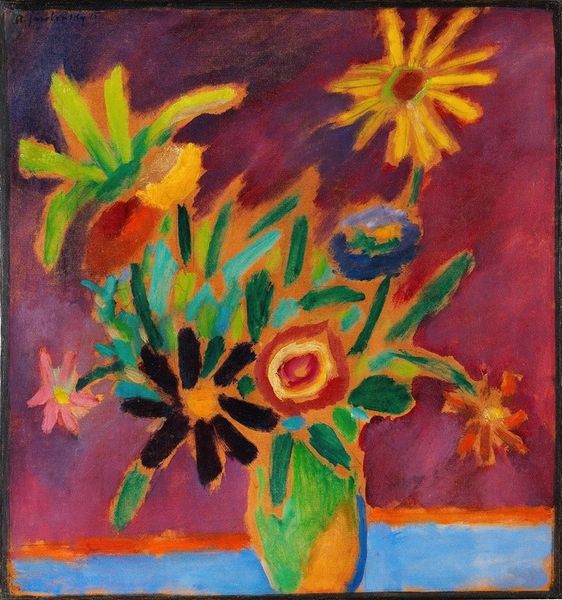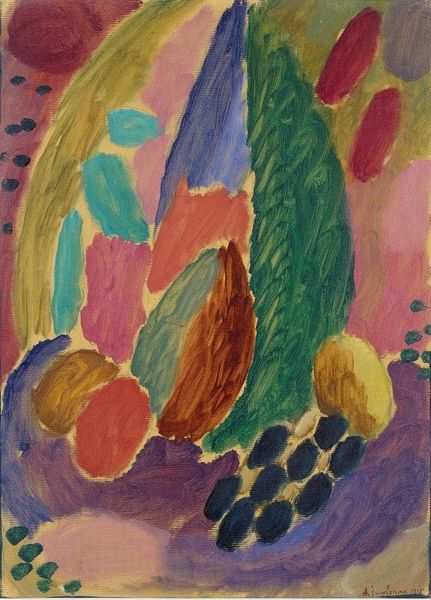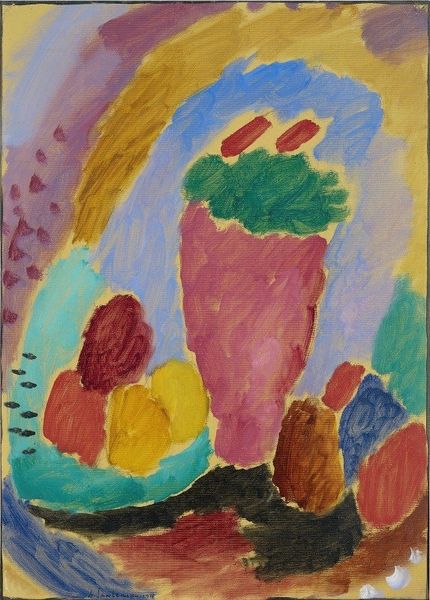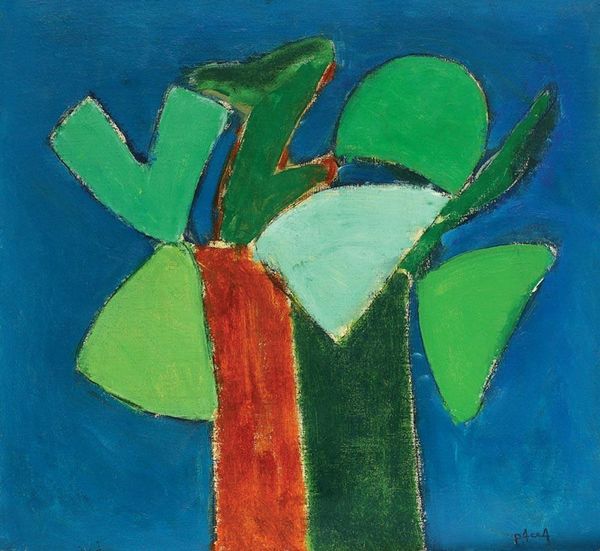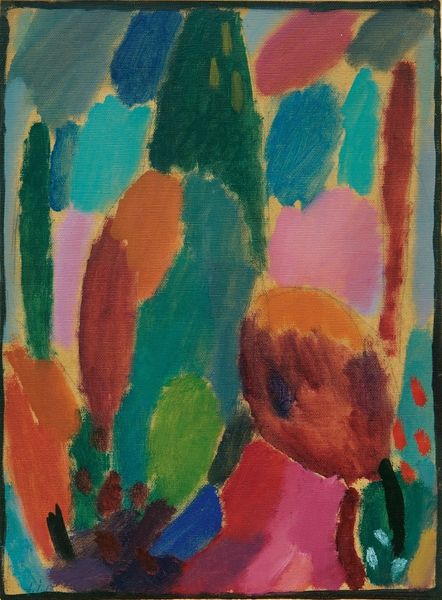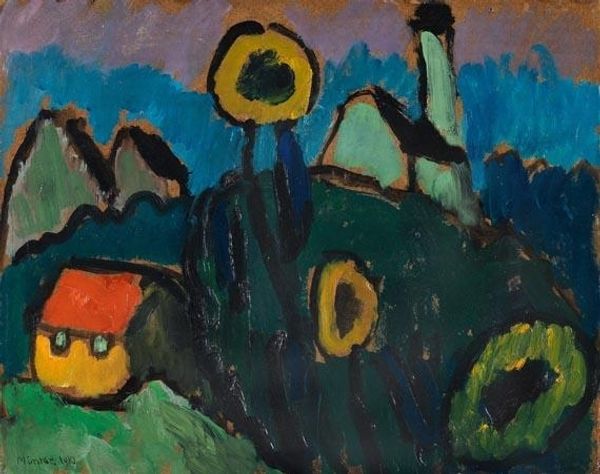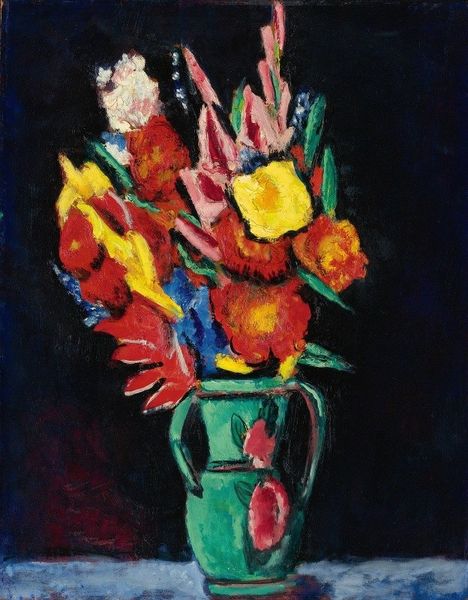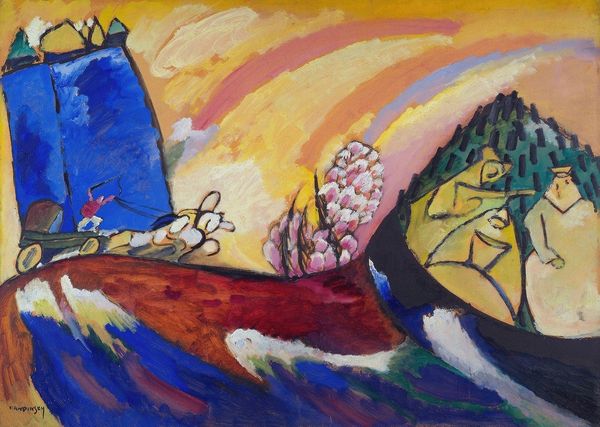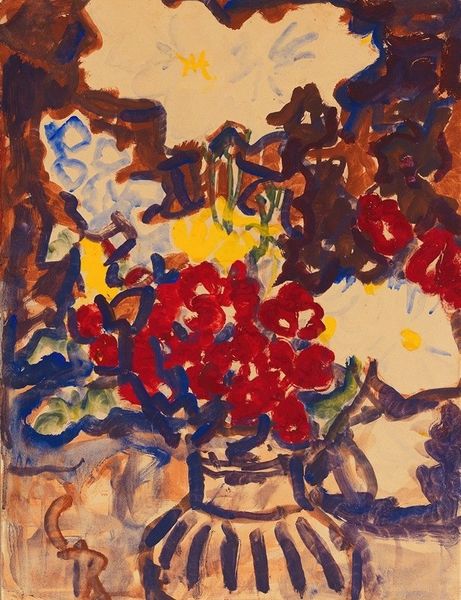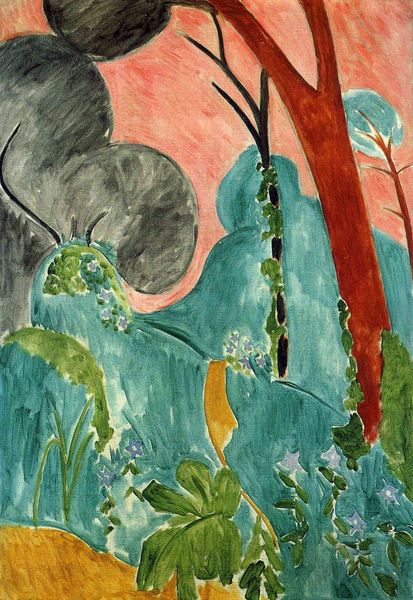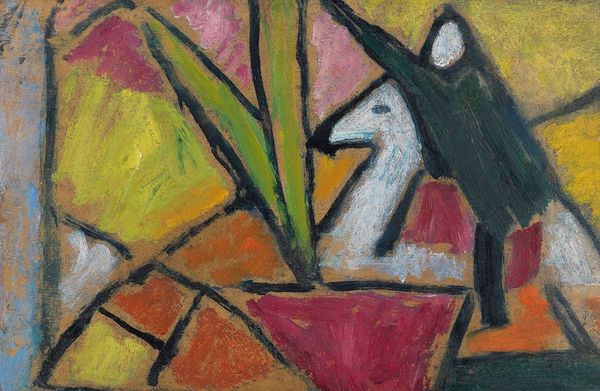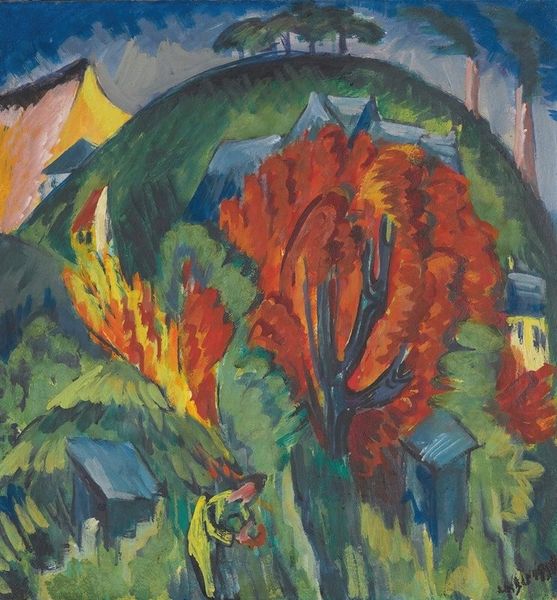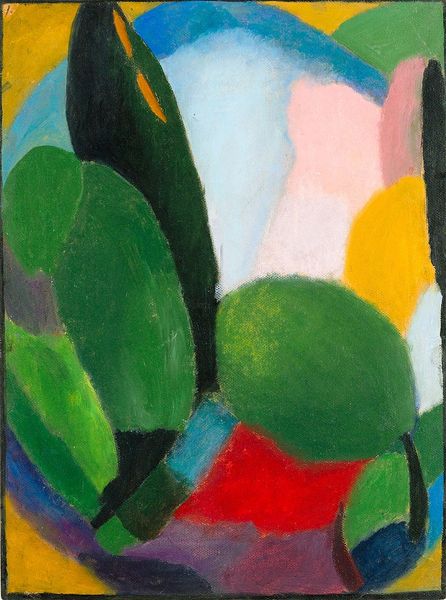
painting, oil-paint
abstract painting
painting
canvas painting
oil-paint
landscape
oil painting
expressionism
naive art
modernism
Copyright: Public Domain: Artvee
Editor: Here we have Marsden Hartley's "Untitled," painted in 1919. It's an oil on canvas, depicting a stark but colourful desert landscape with a vase of flowers. There's a certain tension between the domestic interior and the vast landscape beyond that feels particularly poignant. What do you make of that juxtaposition? Curator: The tension you noted is really important here. Consider the historical moment: 1919, just after World War I. Hartley, like many artists, was grappling with profound societal shifts and the aftershocks of global conflict. The interior space, rendered with vibrant but somewhat jarring colors and simplistic form, becomes a space for reflection but also containment, contrasted with the open, almost overwhelming space of the desert. How might that landscape, that feeling of "openness", be read as both a freedom and a threat, especially in the context of postwar uncertainty and societal anxieties about gender and sexuality? Editor: So you're saying that Hartley’s personal struggles might be reflected in the artwork’s conflicting spaces? Curator: Precisely. The arrangement feels intentionally raw and challenging. The somewhat “naive” style clashes intentionally with academic painting traditions, reflecting Hartley's rejection of established artistic and social norms. The still life with the potted desert flowers could perhaps suggest the forced domesticity/containment of homosexual men in that era, whereas the vastness of the desert landscape is what he feels in his interiority, a vastness that can't find a home. The stripes on the table covering resemble the American flag, possibly alluding to a kind of nationalistic pride. Considering these competing elements, how do we read them against existing notions of identity and belonging, or a resistance to these ideas, at that time? Editor: That makes so much sense now, understanding that push and pull helps me understand it as a social document of his time, and perhaps his soul. Thank you. Curator: And understanding it also gives voice to us in our time, as we examine these ideas in the context of new issues in society today.
Comments
No comments
Be the first to comment and join the conversation on the ultimate creative platform.

